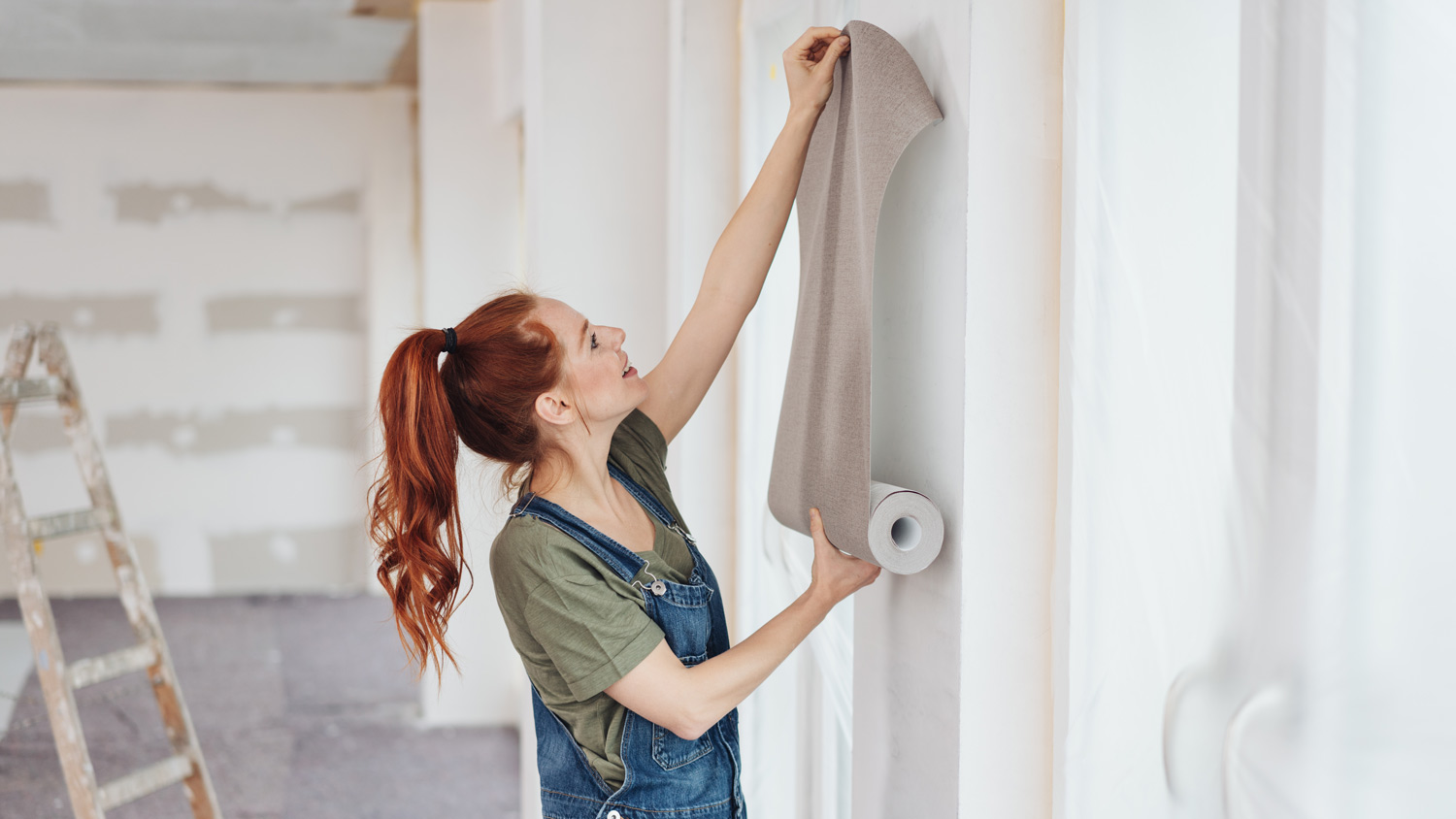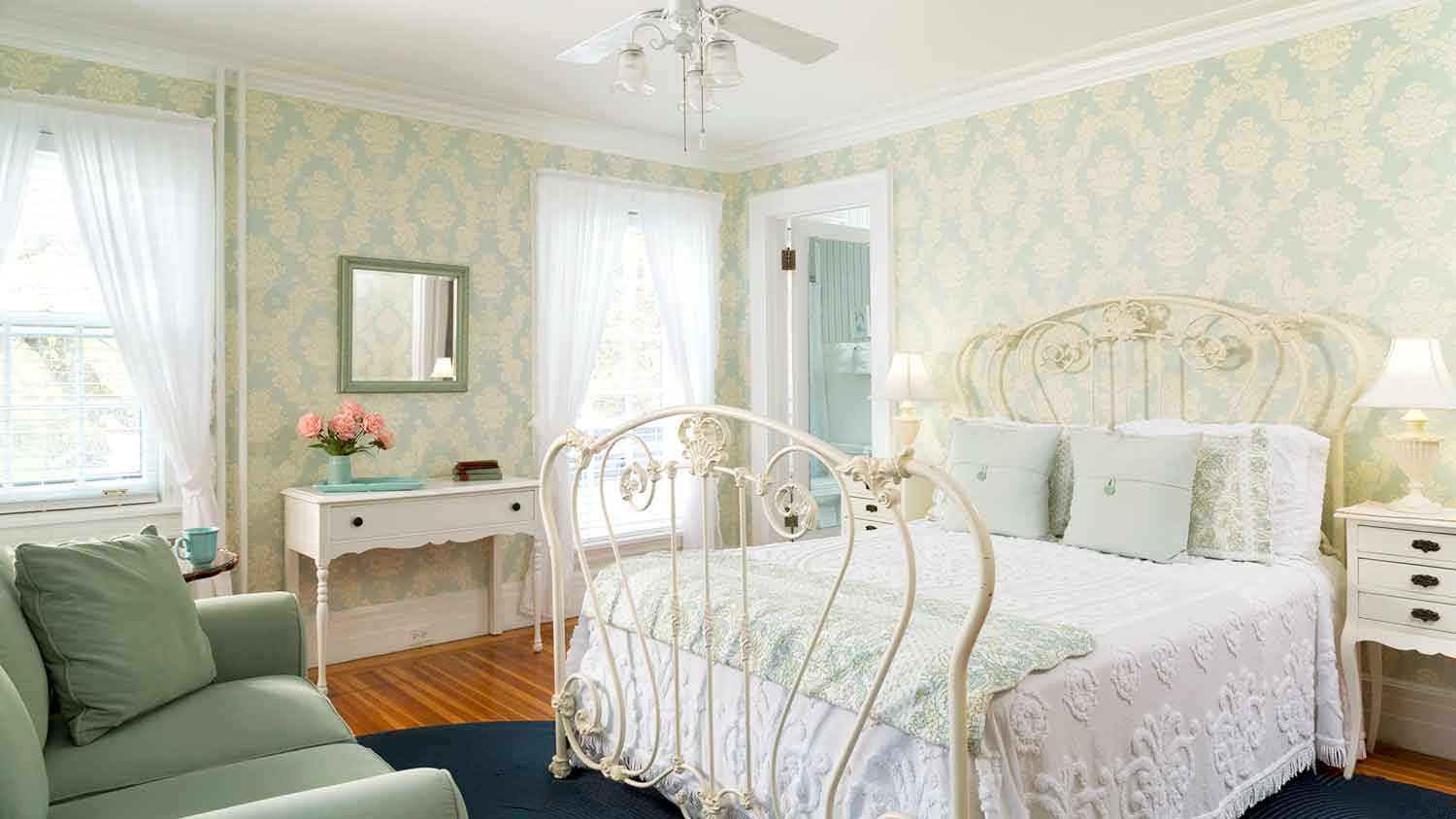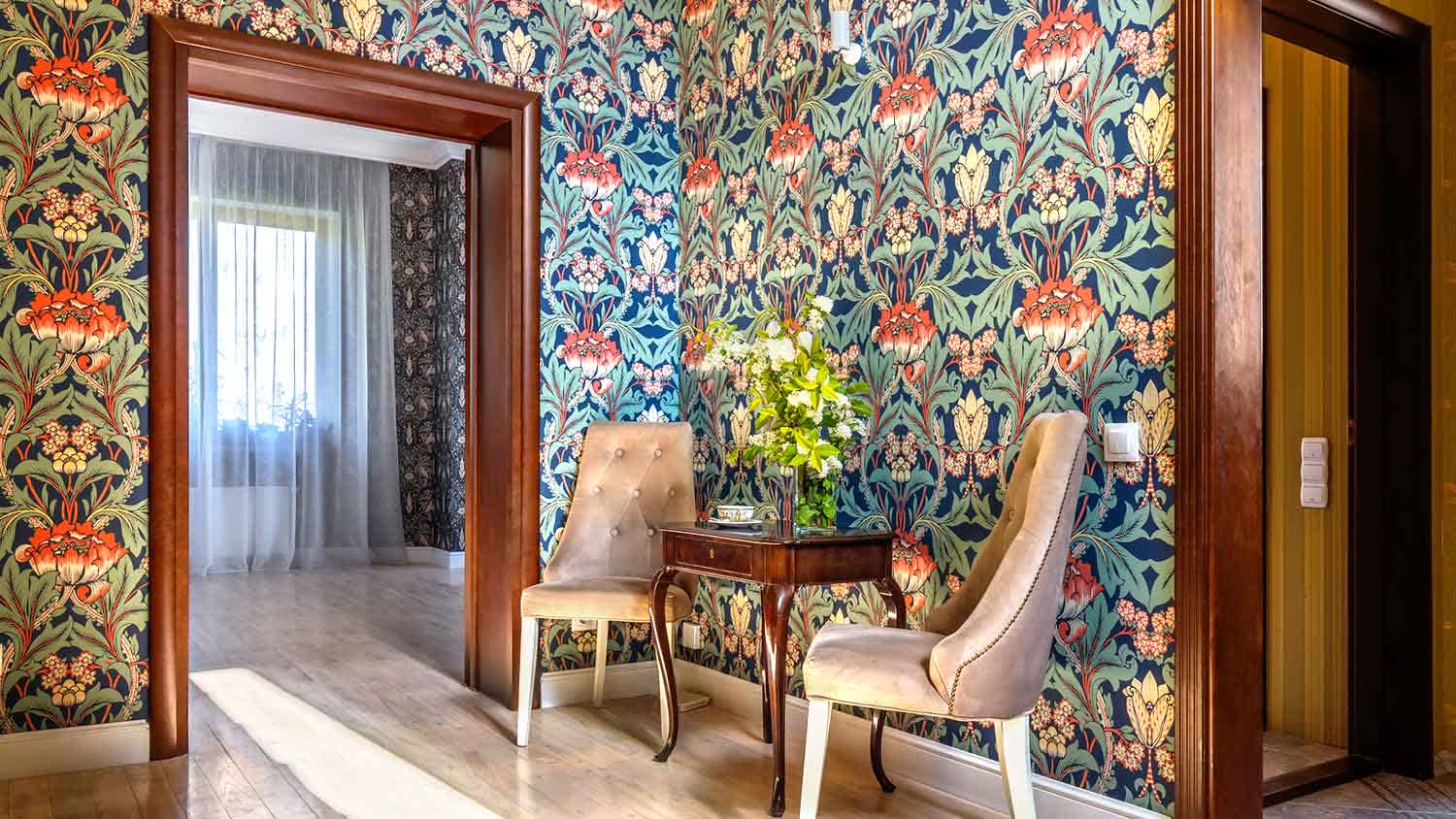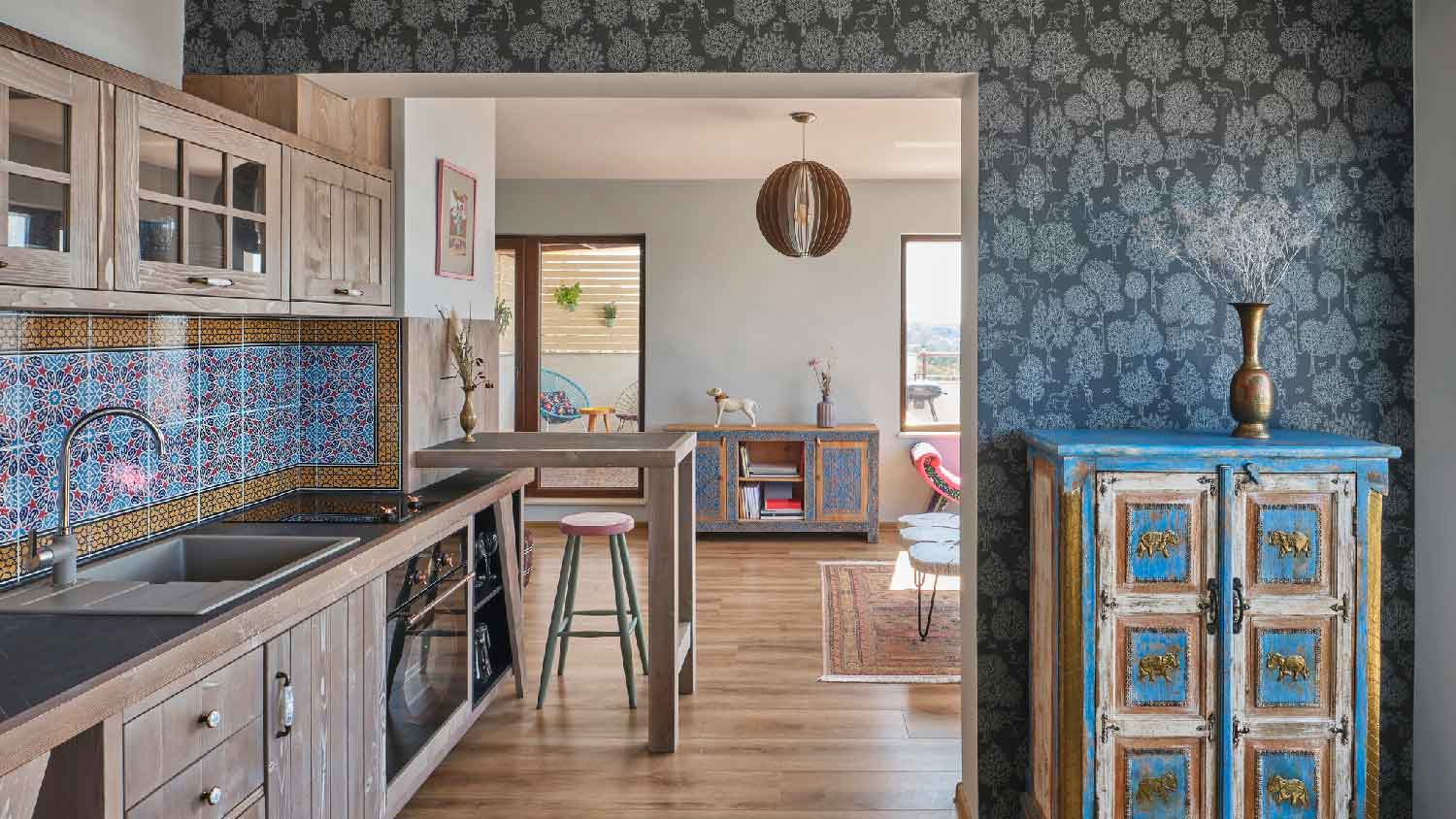
Discover wallpaper installation cost. Learn about material, labor, and project factors to estimate your budget and make informed choices for your home.
Don't wall yourself off from the possibilities


Though many feel limited to paint when they think about putting up an accent wall, using wallpaper delivers even more exciting results. It may require a bit more work on your end, wallpaper opens up a whole new world of textures and patterns that even the nicest shade of paint could never deliver.
From the best types of patterns for small and large spaces to which wall you should pick for your project, here’s everything you need to know about creating an accent wall with wallpaper. Plus: How to make the project easier with stick-and-peel options!
Start your search for wallpaper with an open mind. You’ll see everything from dark-toned chevron prints to light and ephemeral floral designs.
Before limiting yourself, take a moment to roam through some catalogs and simply see what you like. Group your favorites into categories—by color or pattern type, for example—until you have a general sense of what you most prefer. There are thousands of options to choose from, so expect this part of the process to take the longest.
Along with patterns and colors, there are many fun, bold wallpaper textures—a lot of which can’t easily be recreated by paint. Consider an accent wall with linen-fiber wallpaper to soften a space with a lot of harsh metal elements. Or a marbled-texture wallpaper to balance a room that already has a lot of soft, plush elements.

If the idea of putting up wallpaper actually freaks you out more than the thought of doing an accent wall, start with a small wall. Look to entryways and guest bathrooms for nooks and crannies where a lot of work won’t be required. You’ll finish it in no time—and have successfully conquered your fear of putting up wallpaper once and for all.
Some patterns, while appealing, might not really vibe with your usual style. If you still find yourself drawn to test them out, reserve them for small, out-of-the-way areas in your home. If your pick ends up not being a win, that’s totally OK!
All patterns are not equally suited to all spaces. If you’re not careful, a large space may end up feeling even larger with a certain type of wallpaper.
In general, opt for large-scale patterns to make a big room feel cozy and intimate, and a small-scale pattern for the opposite effect. Open up a cramped washroom with a pastel, floral pattern, or shrink a massive living room with prominent stripes.

Unless you’re planning to revamp the entire color scheme of a space, pick an accent wall that meshes well with what colors you already have in place.
Consider the color of the adjacent walls and how they will impact the way that your accent wall looks. For example, a lot of dark colors will be better complemented by bright or light tones. And light shades will pop more strongly when accompanied by something dark.
Speaking of light, you also have to think about the room’s natural light and how it will affect the appearance of your accent wall. Already low-lit rooms will feel even more cave-like with a deep black or navy blue. Conversely, bright yellows and neon pinks may be blinding in too much sunlight.
Now that you have a pattern all picked out, it’s time to decide which wall will get the accent. Start by eliminating any walls with major obstructions that could make the project difficult, like doorways, arches, or built-in cabinets. Try to choose a wall that’s completely bare, without even any electrical outlets or lighting fixtures so the installation process is as easy as possible.
Putting up wallpaper in the traditional sense is just as much (if not more) work than painting a wall. On the other hand, peel-and-stick wallpaper works just as well for a shorter period of time and is way less work-intensive. Keep it away from moisture and you may even be able to enjoy it for just as long as traditional wallpaper.
Paintable wallpaper is an excellent option for anyone interested in making their own home mural. Test out a few different types of paintable wallpaper before committing to one to find the option that’s best for your walls.
From average costs to expert advice, get all the answers you need to get your job done.

Discover wallpaper installation cost. Learn about material, labor, and project factors to estimate your budget and make informed choices for your home.

You can wallpaper over painted wallpaper if the wall is smooth and damage-free so that the newest layer can adhere well to it.

Do you have wood-paneled walls you'd like to conceal? If you're wondering if you can install wallpaper over paneling, the answer is yes. Find out how.

Does peel-and-stick wallpaper damage walls? Ultimately, it depends on application, adhesive strength, and even removal techniques. Find out more in this guide.

Can you put wallpaper in a bathroom? The answer depends on the type you’re planning to use and how well you set up your lavatory before and after.

Love the look of wallpaper, but not sure which type is best? Learn the differences between peel-and-stick versus traditional wallpaper in this guide.